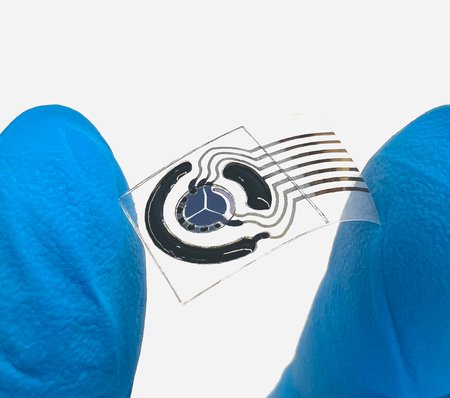
Printable Molecule-Selective Nanoparticles Enable Mass Production of Wearable Biosensors
On Feb. 3, 2025, a team of Caltech engineers announced they have developed a technique for inkjet printing arrays of special nanoparticles that enables the mass production of long-lasting wearable sweat sensors.
These sensors could be used to monitor a variety of biomarkers, such as vitamins, hormones, metabolites, and medications, in real time, providing patients and their physicians with the ability to continually follow changes in the levels of those molecules. Wearable biosensors that incorporate the new nanoparticles have been successfully used to monitor metabolites in patients suffering from long COVID and the levels of chemotherapy drugs in cancer patients at City of Hope in Duarte, California.
Importantly, in the new study, the researchers combine those specially formed polymers with a nanoparticle core made of nickel hexacyanoferrate (NiHCF). This material can be oxidized or reduced under an applied electrical voltage when in contact with human sweat or other bodily fluids. Returning to the vitamin C example, fluid will come into contact with the NiHCF core as long as the vitamin C–shaped holes are unoccupied, and this will generate an electrical signal.
The new core-shell nanoparticles are highly versatile and are used in printing sensor arrays that measure levels of multiple amino acids, metabolites, hormones, or drugs in sweat or bodily fluids simply by using multiple nanoparticle “inks” in a single array. For example, in the work described in the paper, the researchers printed out nanoparticles that bind to vitamin C along with other nanoparticles that bind to the amino acid tryptophan and creatinine, a biomarker commonly measured to see how well the kidneys are working. All of the nanoparticles were combined into one sensor that was then mass produced. These three molecules are of interest in studies of patients with long COVID.
The study was published in the journal Nature Materials.
Tags:
Source: California Institute of Technology
Credit: Photo: A wearable sweat sensor based on the core–shell nanoparticle technology. Courtesy: California Institute of Technology.
